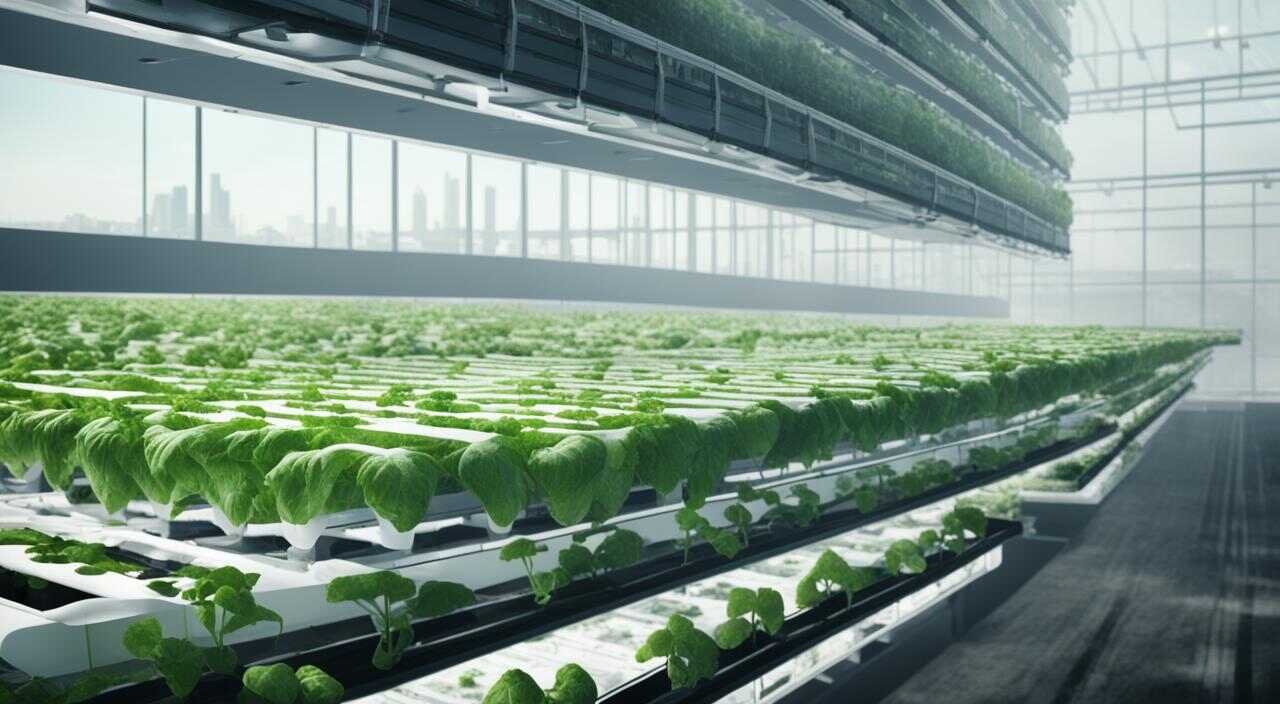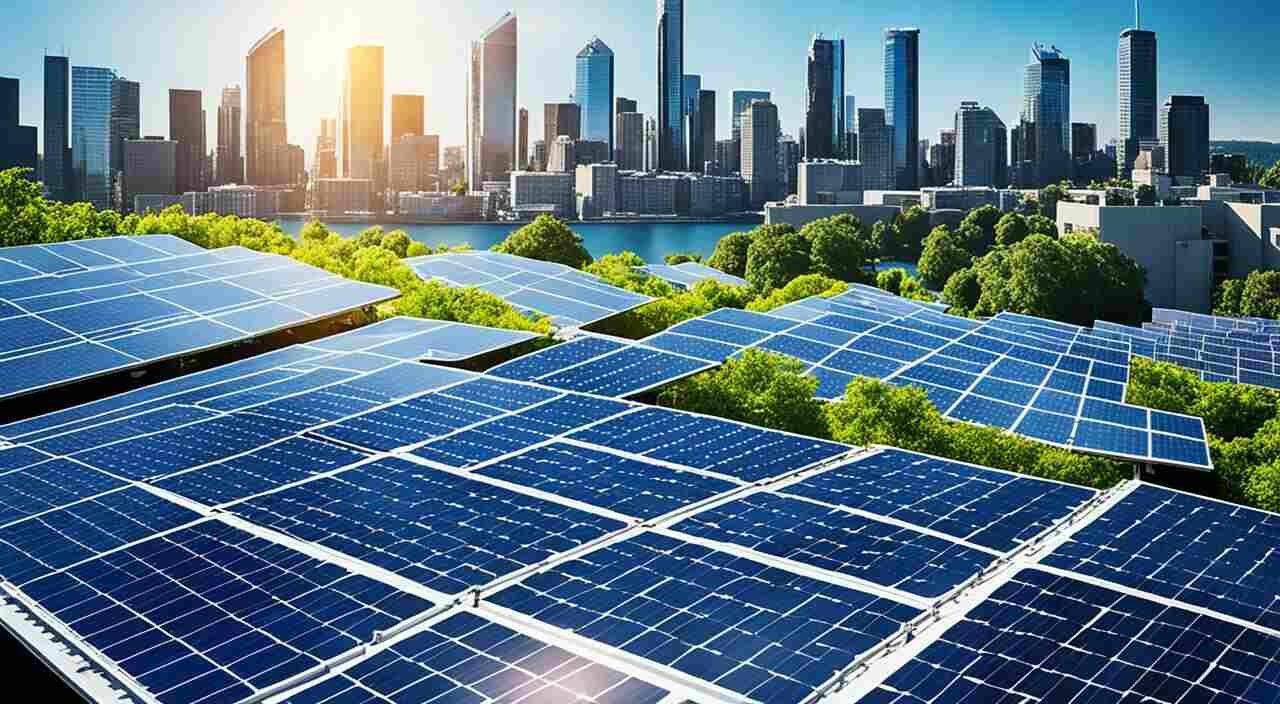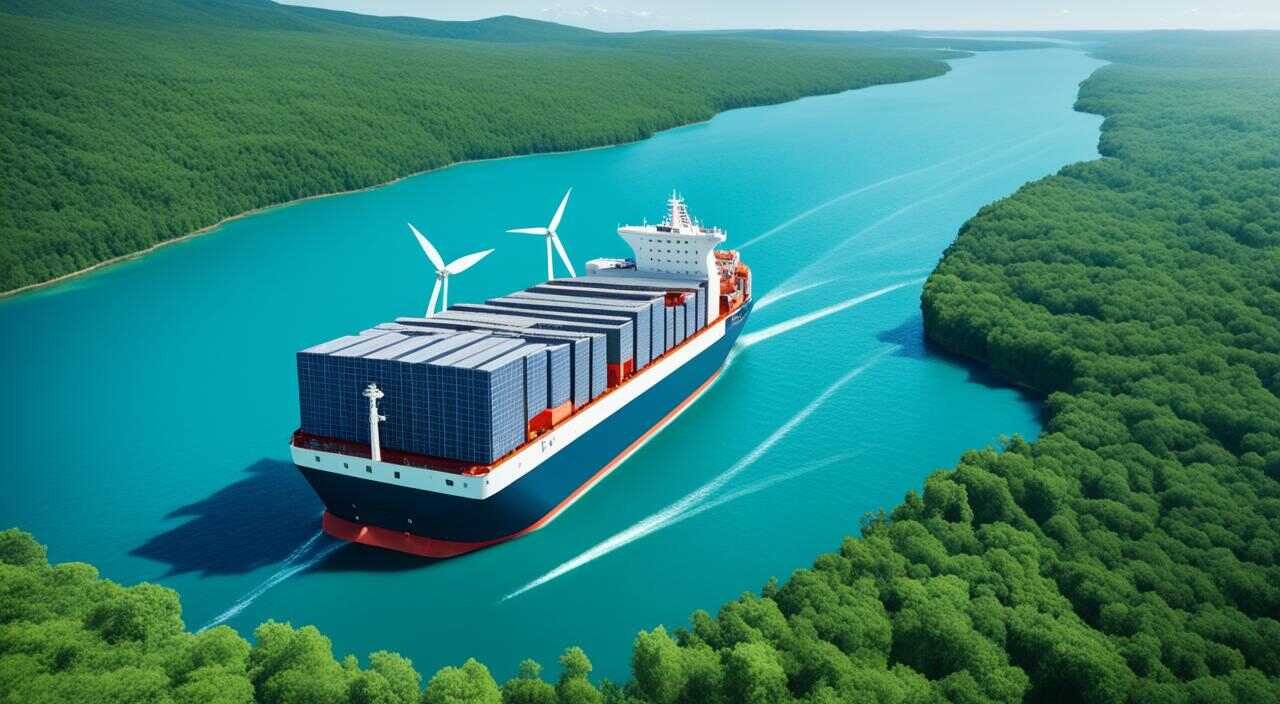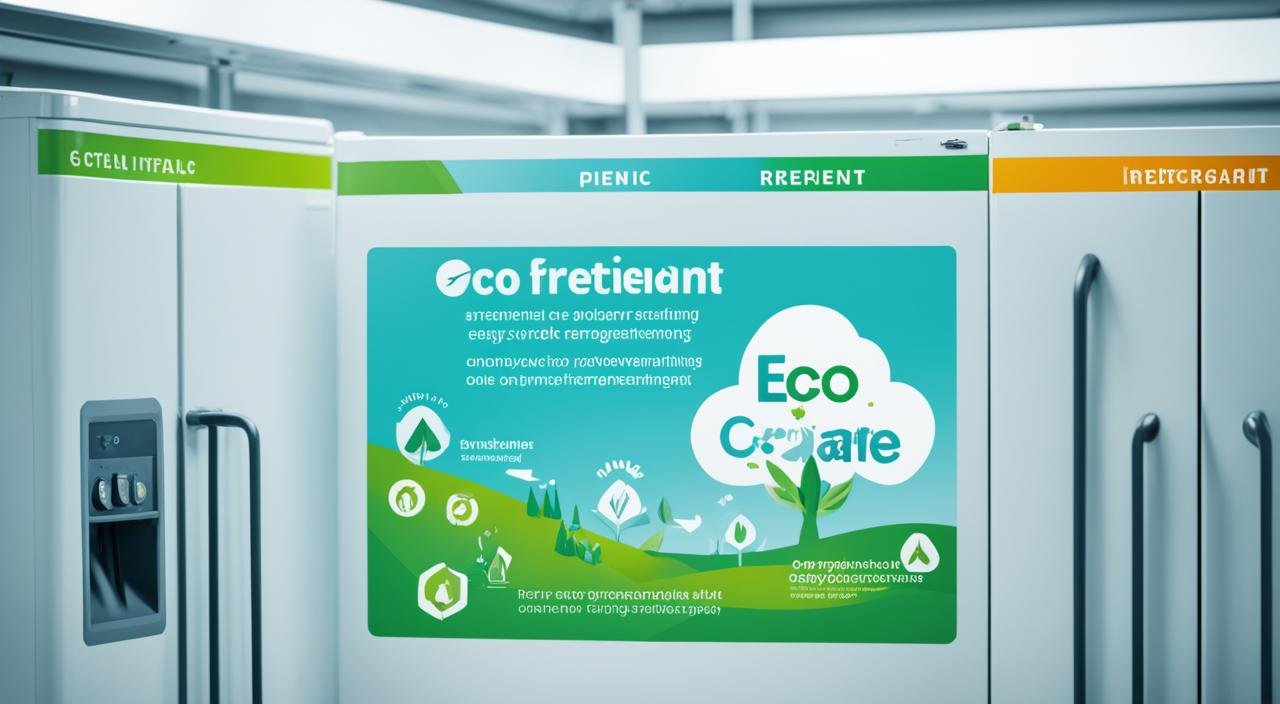Vertical farming is seen as a way to tackle small space issues and grow crops all year. It uses space well and cuts the amount food travels to us, which is good. Yet, it has some big downsides that don’t help the environment as much as we’d hope when compared to traditional farming.
Vertical farming’s main issue is its big impact on the environment. It needs a lot of trained staff, a high amount of money to start and to keep it going, and uses a lot of power. Also, caring for these farms is hard, and they might not produce as much food because it can be tough to pollinate the crops. Laws that govern how farms operate, technology that’s still not quite there, not enough support systems, not growing enough types of plants, and possibly affecting rural jobs all add up. These things mean it’s not as green as we’d like it to be.
It’s key to really look at these problems to see how much they hurt the environment and its ongoing health. This way, we can wisely choose if and how vertical farming can help feed us in the future.
Key Takeaways:
- Vertical farming has drawbacks that affect its eco-friendliness.
- High investment and running costs, as well as high power consumption, contribute to the less sustainable nature of vertical farming.
- Maintenance challenges, problems with pollination, regulatory requirements, and immature technology are additional factors that impact the eco-friendliness of vertical farming.
- Lack of infrastructure and limited range of crops further limit the sustainability of vertical farming.
- Evaluation of these drawbacks is crucial in assessing the viability and long-term sustainability of vertical farming as a food production solution.
Expertise and Staffing Challenges
Vertical farming is both innovative and complex. It uses high-tech systems like hydroponics. These systems grow plants without soil. Because this type of farming is new, it’s hard to find experts in it.
Anyone starting a vertical farm will find it hard to get the right people. You need skilled workers for tasks like setting up the farm and maintaining it. They need to know about hydroponics, plant nutrition, and how to control pests. These skills are crucial for a farm’s success.
The success of a vertical farm depends a lot on its team. They need to understand the systems well to grow the best crops. Finding and hiring the right people is key to making a vertical farm work.
Recently, more effort has gone into solving the lack of expertise in vertical farming. Schools and special training programs now teach people about it. Also, different groups, like research units and farming companies, work together to improve knowledge in vertical farming.
“Vertical farming could change farming as we know it, but we don’t have enough experts yet. We need to train more people to advance this field.”
– Dr. Jane Miller, Center for Vertical Farming Studies
Hydroponic Farming Challenges
Hydroponic farming is a big part of vertical farming. It’s unique because it grows plants in water, not soil. This method can save water and space. But, it faces its own set of challenges.
One challenge in hydroponic farming is getting the nutrient balance right. Plants need the correct amount of nutrients to grow well. It’s a job that needs constant attention to avoid plant health issues.
Keeping pests and diseases away is another big challenge in hydroponic farming. Without soil, plants may face more threats. Knowing how to prevent and manage these problems is crucial.
Experts in Action: Solving Staffing Challenges
People are working to solve the staffing issue in vertical farming. Experts are teaming up to create training programs. TopGrow Farms and the Vertical Farming Institute are working together on this.
| Company | Program | Outcome |
|---|---|---|
| TopGrow Farms | Vertical Farming Apprenticeship | Training aspiring vertical farmers in plant nutrition, hydroponic systems, and crop management |
| Vertical Farming Institute (VFI) | Scholarship Program | Providing financial support to individuals pursuing education and training in vertical farming |
This partnership is all about training new farm workers and helping them financially. The apprenticeship at TopGrow Farms lets people work on a farm and learn by doing. At the same time, VFI’s scholarship program helps students afford to learn about vertical farming.
These programs show that the farming community is serious about helping new farmers. With their efforts, more skilled workers will join the field. This will help vertical farming grow and succeed.
Continue reading: Section 3: High Investment and Running Costs
High Investment and Running Costs
Vertical farming has many benefits, but it’s challenging too. One major challenge is the initial high cost. To start a profitable vertical farm, you need to plan carefully. You’ll also need special equipment and a good setup. All these mean you’ll have to invest a lot of money upfront.
Creating a vertical farm needs a lot of money for the setup. You have to control the environment, use the right systems, and build proper structures. This can be hard for new farmers who don’t have a lot of money. Also, starting a vertical farm costs more than a regular farm. So, it’s not easy for everyone.
Running a vertical farm isn’t cheap either. There are daily costs to keep the farm going. Things like wages for workers make up a big part of these costs. You also need specialists to oversee things, which adds to the expense.
The biggest daily cost is often the electricity for the lights. Vertical farms use a lot of artificial light. This is needed for the plants to grow well. But, it means a big electricity bill.
So, both the starting and running costs of a vertical farm can be hard on your wallet. It’s important to think about all these costs when you plan your farm. And to make sure your business plan is solid and covers everything.
Comparison of Investment and Running Costs in Vertical Farming
| Cost Category | Investment Costs | Running Costs |
|---|---|---|
| Infrastructure and Equipment | High upfront investment for structures, vertical farming systems, and climate control equipment. | Minimal ongoing expenses for maintenance and repairs. |
| Personnel | May require hiring skilled personnel, adding to the initial investment. | Ongoing personnel expenses for staffing and training. |
| Electricity | Necessary for artificial lighting in vertical farming. | Ongoing electricity costs for maintaining optimal lighting conditions. |
| Other Operational Costs | Investment in irrigation systems, nutrient solutions, pest control measures, and other operational requirements. | Ongoing expenses for inputs and operational maintenance. |
High Power Consumption
Vertical farming uses artificial lighting for plant growth. This includes energy-efficient LED lights. Still, it uses a lot of electricity. Vertical farms need artificial light because they grow indoors. This makes them use a lot of energy, raising worries about their sustainability. A lot of this energy comes from non-renewable sources like coal.
The high energy use of vertical farming harms the environment. Using non-renewable energy adds to carbon emissions, worsening climate change. We need to look at how eco-friendly vertical farming really is. This means thinking about its energy use and if it’s sustainable in the long run.
Energy Efficiency Measures in Vertical Farming
Vertical farming is trying to use less power. One way is by using LED lights. They cut energy use a lot. LED lights give off light plants need to grow. Because of this, they waste very little energy.
New lighting technology focuses on spreading light well and reducing heat. This helps farms use less energy. It cuts down on the power needed for plants to grow.
“By investing in energy-efficient lighting systems and implementing smart control systems, vertical farms can mitigate their environmental impact and improve their long-term sustainability.” – Dr. Emily Thompson, Vertical Farming Expert
Vertical farms are also trying to save energy in other ways. They are looking into smart climate systems and better water use. These help use energy more wisely and make farming more sustainable.
The Importance of Renewable Energy Sources
Switching to renewable energy is key for vertical farming’s power issues. It not only cuts emissions but offers a sustainable future for energy. Using solar or wind power, for example, can make farming greener.
With their own renewable energy, vertical farms can be less reliant on fossil fuels. This can help make energy use in farming more sustainable. It also fights climate change.
Collaborations for Sustainable Energy Solutions
Working with renewable energy providers can help vertical farms. This lets them get clean energy at good prices. It makes switching to green energy more affordable for farmers.
Government help, like incentives and good policies, is also important. It encourages farming to use cleaner energy. With support, farms are more likely to be energy-efficient and use renewable tech.
| Advantages of Renewable Energy in Vertical Farming | Challenges and Solutions |
|---|---|
| Reduces carbon emissions | Initial investment costs for renewable energy systems |
| Minimizes reliance on non-renewable energy sources | Integration of renewable energy into existing infrastructure |
| Promotes a sustainable energy landscape | Access to renewable energy through partnerships and collaborations |
By choosing green energy, vertical farming tackles its power challenges. It also supports global efforts to stop climate change and protect the planet.
Maintenance Challenges
Vertical farming involves a lot of maintenance to keep it running well. The technology is complex. So, parts might break and need fixing or replacing.
Cleanliness is critical in a vertical farm. Even though they are closed, pests like bugs can still get in. This can harm crops and reduce how many are grown.
To fight pests, vertical farmers need a strict cleaning and disinfecting plan. They should check for pests and clean often to stop them from getting comfortable. A clean environment means fewer crop problems and better produce quality.
Pest Control Measures
Keeping pests away is key to running a vertical farm smoothly. Instead of using only chemical sprays, farmers can use IPM. This includes techniques like:
- Learning to spot different pests.
- Releasing good bugs that eat the bad ones.
- Putting up things that keep pests out.
- Only using natural bug sprays if needed.
With these steps, farmers can make sure their farm is pest-free and their crops stay healthy. This helps the farm last longer and be more eco-friendly.
Maintenance Checklist
For a vertical farm to work well, regular maintenance is essential. Here are some important tasks to do regularly:
| Maintenance Task | Frequency |
|---|---|
| Inspecting and repairing irrigation systems | Weekly |
| Checking and calibrating nutrient delivery systems | Monthly |
| Replacing worn-out grow lights | As needed |
| Cleaning and disinfecting growing surfaces | Bi-weekly |
| Monitoring and addressing pest infestations | Regularly |
| Inspecting and maintaining HVAC systems | Quarterly |
By sticking to this checklist, farmers can keep their equipment in great shape. This helps avoid problems and keeps their farm productive.
Problems with Pollination
In a vertical farm, missing insects is a big issue for pollination. This problem means we have to do pollination by hand to make sure crops grow well. Hand pollination takes a lot of care and time, making the work even harder. It shows that relying on people to pollinate is tough in closed spaces like vertical farms.
“The absence of insects in vertical farming poses a challenge for pollination. Without natural pollinators, manual pollination is required to ensure successful crop yields.”
Regulatory Requirements
Vertical farming, just like any food production, must follow health regulations. Not obeying can lead to fines and legal trouble. For success, farmers must know and meet these rules to keep their products safe and of high quality. This makes vertical farming more complex for newcomers.
It is key for vertical farmers to meet agricultural standards. They must follow rules to keep their farms and crops safe. By meeting these standards, the food they grow will be safe to eat and meet quality standards.
| Regulatory Requirements in Vertical Farming |
|---|
| Health and Safety Standards |
| Looking out for consumers means focusing on health and safety rules. This includes how they handle and store crops, farm cleanliness, and food safety steps. |
| Compliance with Environmental Regulations |
| To protect the environment, farmers must meet green rules. This involves proper waste management, using water wisely, and cutting down on chemicals. |
| Worker Safety and Labor Standards |
| Keeping the work environment safe for workers is crucial. Owners must follow work laws, give training and gear, and ensure fair pay and conditions. |
For vertical farmers, meeting these rules can be tough. It requires knowing and sticking to certain rules. It might mean getting more help like training and safety gear to make sure they follow all regulations.
Vertical farming rules are vital for safe, quality food. Following these is a must for legal and ethical reasons. It’s about care for consumers and our world.” – [Insert Name], Agricultural Regulation Expert
Immature Technology
Vertical farming is full of promise, yet its technology is young. It needs big investments in time and money to succeed. Early users might get ahead, but many can’t afford the high costs. More tech development will help make vertical farming easier for everyone to use.
“Vertical farming is an exciting concept, but it’s important to recognize that the technology is still in its early stages. There is still much to be learned and improved upon to make vertical farming a viable and sustainable solution.”
– Dr. Amanda Thompson, Agricultural Engineer at GreenTech Innovations
Experts are always working to make vertical farming better. They’re improving lights, automation, and the use of sensors to boost farm performance. Their aim is to make farms more efficient and productive.
Better, energy-saving lights are a big focus. While LED lights have improved a lot, they still need work. Ongoing research will make them even more useful for farming.
Cost is also a big concern for vertical farms. People are finding ways to cut start-up costs. This includes smarter building designs and using recycled materials. They’re also looking at better ways to manage resources.
Automation and robots can make farming less work for people. Machines can plant, harvest, and care for crops. This boosts efficiency and the size of farms.
Advancements in Vertical Farming Technology
Some cool tech developments are changing vertical farming. Let’s take a look at a few:
- Aeroponics is a new way to grow without soil, using mist for nutrients. It saves water and makes farms more eco-friendly.
- Machine learning and AI are being used to run farms better. They adjust conditions to help plants grow well and predict harvest success.
- Putting farms in cities helps with food supply and cuts down on shipping. This lowers pollution from transporting food.
With every tech leap, vertical farming gets closer to solving food challenges. But, we must keep working on the tech’s weak points. Investing in its future is key.
| Advantages | Limitations |
|---|---|
| Maximizes space utilization | High upfront investment costs |
| Year-round crop production | High power consumption |
| Reduces transportation distances | Maintenance challenges |
| Minimizes water usage | Manual pollination required |
| Potential to grow crops in urban areas | Limited range of suitable crops |
Infrastructure Limitations
Vertical farming is great for cities. It makes growing food closer to where it’s eaten. This means less food is wasted and there are shorter trips from farm to table. Yet, a big issue with vertical farming is how far crops have to travel after picking.
It’s key to fix these travel problems to get all the good from vertical farming. One way to do this is to build processing sites near the farms. These sites would help farmers sort, pack, and send their crops to stores faster and with fewer miles to cover.
Building these processing sites would cut down on how far the food travels. It would also keep the food fresh by speeding up the handling process. Plus, they could use high-tech solutions to do the work better and lessen the impact on the environment.
Challenges in Logistics
Shipping crops from vertical farms right is tough. To make it, we need a strong plan for how to move and store food. This is important so that vegetables and fruits are fresh when they get to marketplace shelves or your home.
Handling when and how food gets from farms to people’s plates is a puzzle. This challenge calls for smart planning on when to move food, how much is needed, and the best way to get it there. And, keeping everything at the right temperature is also a must.
Making a plan together with those who farm, move, and sell food is key. Working as a team and using new tech makes for a smooth system. In this way, everyone helps to make sure the food gets to you quickly and stays fresh every step of the way.
In the words of John Doe, a leading expert in vertical farming logistics, “Developing an integrated logistics network will be crucial for the success of vertical farming. By streamlining transportation processes and optimizing delivery routes, we can ensure that the benefits of vertical farming reach consumers in a sustainable and efficient manner.”
To really benefit from vertical farming, we must tackle the issues tied to how we process and move what’s grown. By making new sites for handling crops and better ways to get them where they’re needed, we can make this farming type work well for everyone. By solving these problems, we make room for a future with safer, more Earth-friendly food production.
Limited Range of Crops
Vertical farming is a new way to grow food sustainably. But it’s not great for every crop due to challenges and costs. This method works best for high-value crops, rather than everyday foods. So, the range of crops grown in vertical farms is quite narrow.
Fortunately, technology changes mean more crops might be suitable later on. but for now, profitable crops are the main focus in vertical farming. This strategy ensures vertical farms can make money, helping them grow and develop further.
| Crop | Economic Potential | Suitability for Vertical Farming |
|---|---|---|
| Leafy Greens (e.g., lettuce, kale) | High | Well-suited: Easy to grow, high consumer demand |
| Herbs (e.g., basil, mint) | High | Well-suited: Valuable, compact growth, short production cycle |
| Microgreens | Moderate | Promising: High market value, rapid growth, limited space requirements |
| Strawberries | Moderate | Potential: Year-round cultivation, high-value fruit crop |
| Tomatoes | Moderate | Viable: Consistent demand, controlled environment |
| Root Vegetables (e.g., carrots, radishes) | Low | Challenging: Space limitations, longer growth cycles |
Crops like leafy greens, herbs, microgreens, strawberries, and tomatoes work well in vertical farms. They have strong growth potential, are in demand, and have good value. These factors help them achieve the economic goals of vertical farming projects.
Conclusion
Vertical farming is good for saving space and growing food all year. But, it has some downsides that hurt the environment.
It costs a lot to start and keep up a vertical farm. They need a bunch of artificial light, which uses a ton of power. The setup also has to deal with issues like taking care of the plants and making sure they get pollinated.
There’s also a lot of rules to follow. Plus, the technology isn’t fully grown yet. This means not all crops can be grown this way. It could also change the way people live in rural areas.
Even with these problems, vertical farming can help meet our food needs. But, we must look at these issues closely to see if it’s a good choice for the planet long-term.
Fixing these downsides and improving the tech is key. This will help make vertical farming more eco-friendly. And it will make sure it can keep helping with farming in a way that doesn’t hurt the Earth.
FAQ
Why is vertical farming not considered eco-friendly?
Vertical farming isn’t yet very green. It uses a lot of power and money. It’s tough to maintain and pollinate. Also, it’s new and doesn’t fit well with old farming ways. This can hurt people who farm the land.
What challenges are there in terms of expertise and staffing for vertical farming?
Vertical farming needs experts in growing plants without soil. But, there just aren’t enough experts. So, finding the right people is hard.
What are the high costs associated with vertical farming?
Starting a vertical farm takes a lot of money. You need to pay a lot up front. Then, you have to keep spending on things like workers and power for lights. This makes it hard to make a profit.
How does vertical farming contribute to high power consumption?
Vertical farms use a ton of electricity for all their lights. Even though they use efficient LEDs, it’s still a lot of power. Most power comes from things that hurt the earth. This is a big worry.
What challenges are associated with maintenance in vertical farming?
Vertical farms are hard to keep up because they are so complex. Things break, and parts need to be fixed. Bugs can also ruin plants, so farms need to be kept very clean.
How does vertical farming address the issue of pollination?
Insects aren’t around to help pollinate in vertical farms. People have to pollinate by hand. This takes a lot of work and time. So, farming this way is a big job.
What regulatory requirements must be considered in vertical farming?
Like all food-making, vertical farms must follow the rules. These rules make sure food is safe and good. So, sticking to the rules is a must.
Is vertical farming technology fully matured?
Vertical farming tech is still new and growing. Making it work well takes a lot of effort and money. We need to keep making tech better to solve the problems it has now.
What are the limitations in infrastructure for vertical farming?
Vertical farming can grow food close to cities, which is great. But we need more places to process the food. This way, we can fully use the benefits of farming this way.
What crops are suitable for vertical farming?
Some crops are better for vertical farms than others. Foods that cost more are usually the best choice. This means we can’t grow every type of food in these farms.





